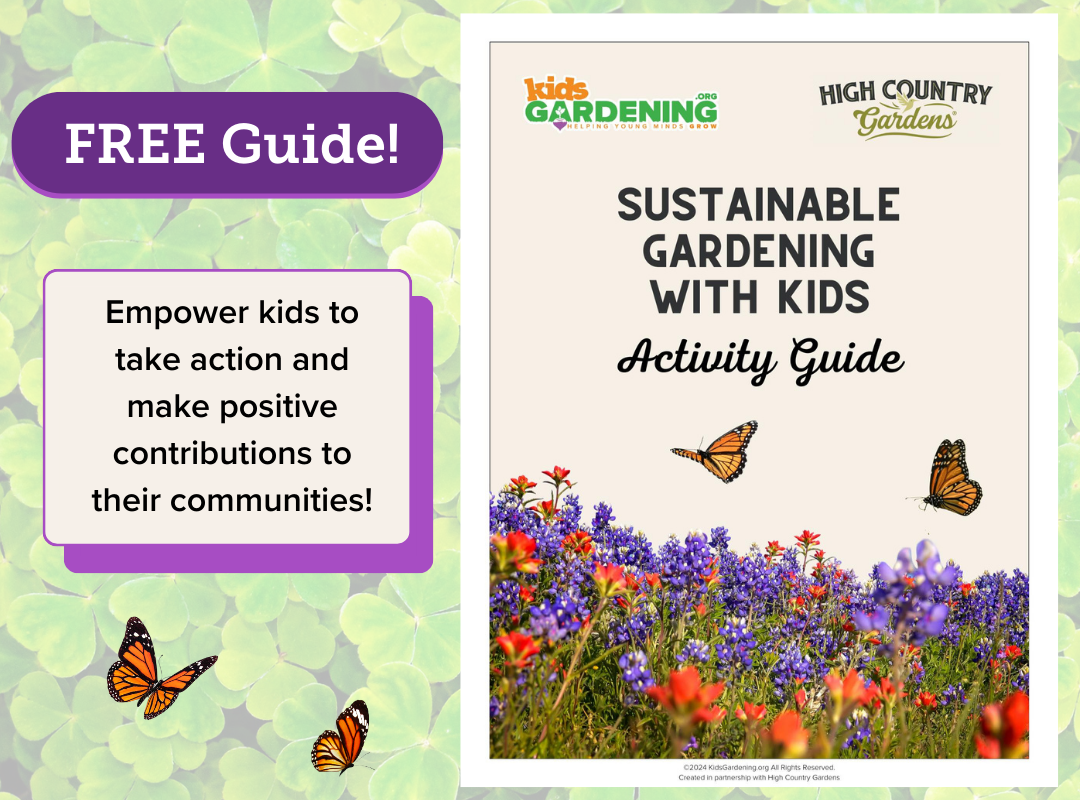Nutrition education may not be the focus of the standardized tests given in schools, but with rising health issues related to a society with poor eating habits, educators recognize that school is an important place to teach kids about maintaining a healthy lifestyle. Consequently, educators are looking for ways within the core curriculum to include nutrition education, and many are turning to gardens as an answer. Participating in the growing of vegetables and fruits in a school garden is a great way to broaden children’s food horizons, improve their nutritional knowledge, and encourage them to add more healthful foods to their diets. Not only do gardens offer strong curricular connections, school gardens are a perfect way to get kids excited about eating fresh, local produce and help them feel more connected to local food systems.
Best Practices for Nutrition Education Programs
Activities using the harvested fruits and vegetables should be carefully planned to help achieve nutrition education goals. Nutrition educators and researchers note that isolated lessons are unlikely to persuade children to adopt healthy eating behaviors. The most effective food and wellness initiatives acknowledge all the ways in which the school environment, directly and indirectly, teaches kids about food and health and then work towards sending a consistent message. Here are a few tips for creating a comprehensive educational program that will help kids adopt healthy habits:
Be sure to incorporate recommended food safety procedures in the growing, harvesting, storage, and preparation of vegetables and fruits from the school garden. This will ensure that gardening and enjoying the harvest is both safe and fun for everyone.
- Involve students as much as possible. Engage students in planning, tasting, growing, cooking, and promoting food choices to invest them in the process.
- Don’t ban or preach. Instead of telling kids what they shouldn’t eat, try to inspire curiosity and make discovering new foods irresistible.
- Don’t use food as a reward or withhold it as a punishment. Eating nourishing foods should be seen as pleasurable, not as a bargaining chip.
- Encourage adults to model good eating habits and the joy of sharing food. Find opportunities for teachers, administrators, staff, and parents to join students for classroom snacks, school lunches, and school-based community meals.Work towards consistent food and nutritional messages in all school food venues. Shift traditions related to classroom snacks and parties and change food sold in the cafeteria, at fundraisers and sporting events, and in vending machines to highlight healthy choices.
- Weave studies of food, food systems, and nutrition into the curriculum. Look for ways to include food and nutrition messages as learning themes and/or enrichment topics for core subject matter.
- Get parents and guardians on board. Parents are the biggest influences on eating habits. Engage parents by sending home recipes and newsletters, inviting them to special meals, and recruiting them to volunteer in the garden and with the nutritional programming.
- Use the cafeteria as a classroom. Enlist the help of food service staff and showcase foods through tasting events, cooking demonstrations, educational materials, and guest speakers.
- Involve community partners. Capitalize on the knowledge and resources of community partners like farmers, chefs, and health specialists.
- Extend food and nutrition education beyond the school day. After-school programs and family food projects can reinforce your message.



